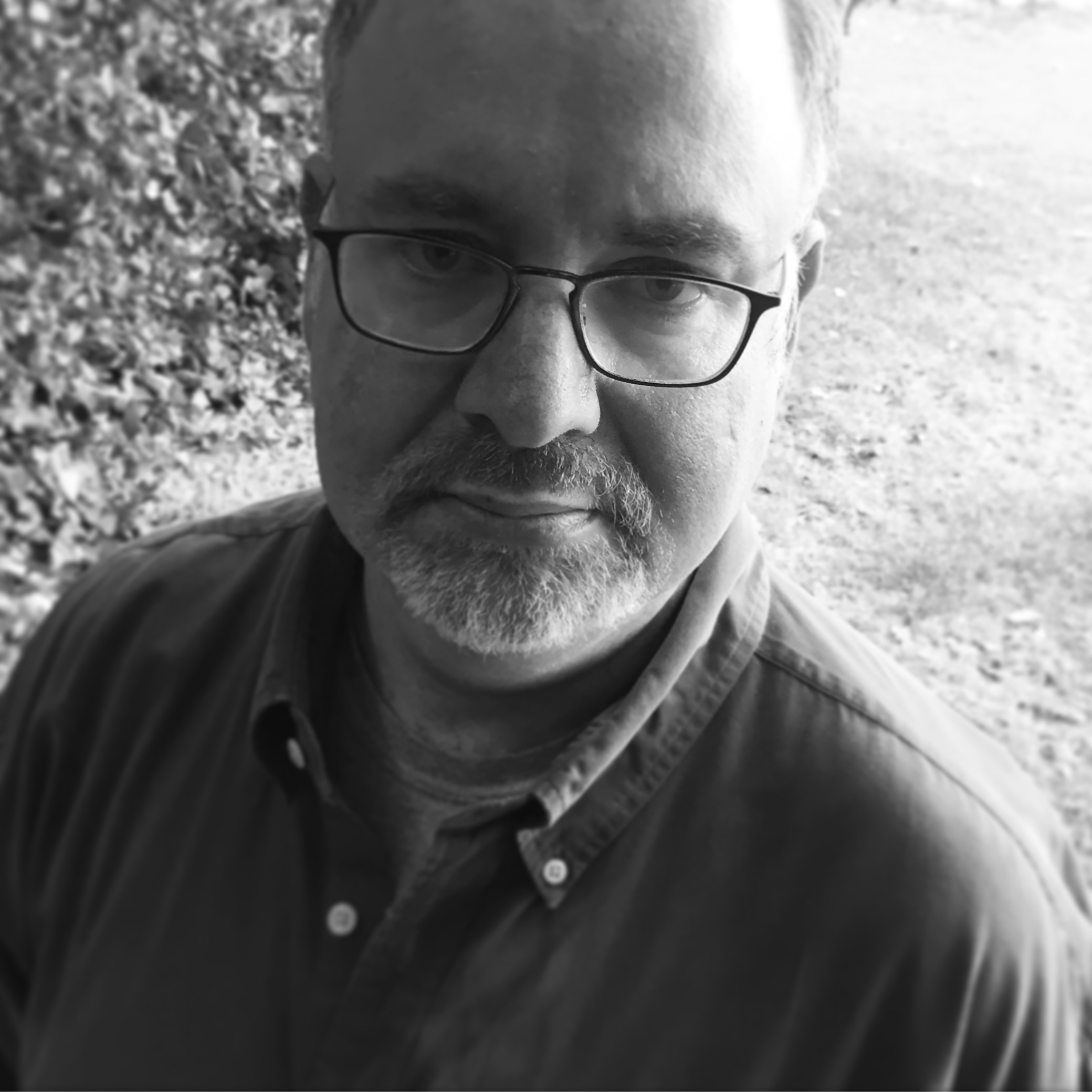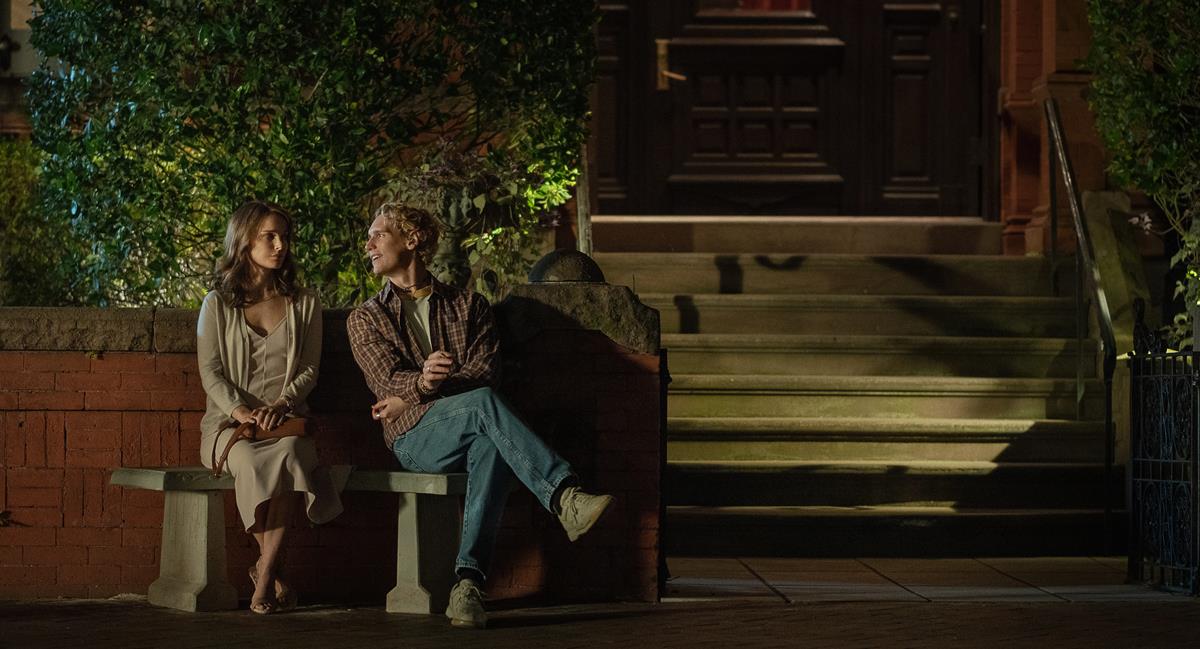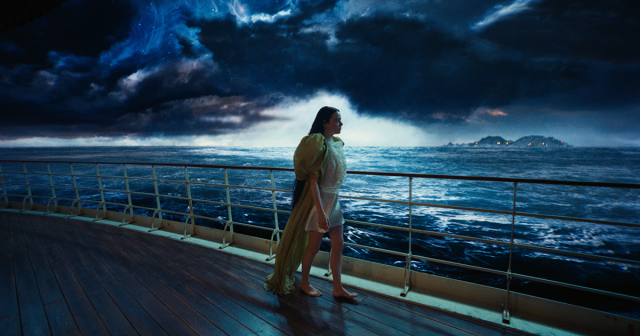
TL;DR
- Netflix’s “May December,” the new film from director Todd Haynes, examines how little people understand about how they appear to others.
- The story of real-life teacher Mary Kay Letourneau, who married the much-younger object of her desire after serving time for second-degree rape of a child, serves as a springboard for the film.
- As with his other films, Haynes employs stylistic techniques to remind audiences that they are watching an artistic construct.
- The film was shot using ARRI’s new Alexa 35 by DP Christopher Blauvelt rather than longtime Haynes collaborator Edward Lachman.
- Blauvelt appreciated the increased latitude of the Alexa 35, which allowed him to shoot in bright daylight without overexposure.
Few people really know what they sound or look like or how they appear to others. That is among the essential ideas that director Todd Haynes’ new film on Netflix, May December, examines. The film concerns Gracie (Julianne Moore), a woman who has married and raised children with Joe (Charles Melton) — a pairing that began when she was already married and in her 30s and he was just 13. We quickly learn that their relationship landed her in prison and resulted in a national scandal similar to that of real-life teacher Mary Kay Letourneau, who married the much-younger object of her desire after serving time for second-degree rape of a child. May December is clearly meant to summon audiences’ memories of Letourneau’s situation as its springboard.
The story kicks off when Elizabeth (Natalie Portman), an actress set to portray Gracie in an indie film, spends time with Gracie, Joe and their children in an attempt to absorb useful information about the character she’s scheduled to portray. Gracie sees this as an opportunity to shape Elizabeth’s portrayal into the sympathetic portrayal she feels is truthful, while Elizabeth is focused on gathering any detail, the more sordid the better, that she can use in her performance.

As is almost always the case with Haynes’ filmmaking, the director isn’t looking to make the audience feel like they’re watching something “real,” or to forget that they’re watching a movie. Instead, he searches for ways to remind audiences that they are watching an artistic construct, whether by using the stylistic techniques of a ‘50s melodrama in Far from Heaven, the approach of a sensationalist exposé, as in his well-known short Superstar, in which a Barbie doll stands in for singer Karen Carpenter, or a mid-century romance in Carol.
As Haynes told American Cinematographer back in December 2002, following the release of Far from Heaven, which was stylized to look like a Douglas Sirk “women’s picture” of the 1950s: “I think the best movies are the ones where the limitations of representation are acknowledged, where the filmmakers don’t pretend those limitations don’t exist. Films aren’t real; they’re completely constructed. All forms of film language are a choice, and none of it is the truth. … We’re not using today’s conventions to portray what’s ‘real.’ What’s real is our emotions when we’re in the theater. If we don’t have feeling for the movie, then the movie isn’t good for us. If we do, then it’s real and moving and alive.”
Among the techniques he uses in May December to achieve this type of aesthetic distancing: scenes framed by mirrors; coastal Georgia locations captured through large amounts of diffusion; and grain laid in during post for additional texture and a seemingly discordant music track, repurposed from 1971’s torrid romance The Go-Between from director Joseph Losey and writer Harold Pinter.
Distancing techniques notwithstanding, the film also avoids traditional filmmaking tropes that cue the viewer about how to feel about what they’re watching. Could there be some truth in Gracie’s notion that her relationship was borne of true love and evolved into normal family life? Is Elizabeth’s attempt to cut through Gracie’s public front a search for truth or just another form of exploitation? In that way sense May December could be said to be this year’s Tár, with final judgement ultimately left to the viewer.
As Haynes summarizes in his director’s statement from Netflix, “All lives, all families, are the result of choices, and revisiting them, probing them, is a risky business. But it’s hard to think of more volatile romantic choices than these, and all the more so when so many defenses have been called upon to shut out such unanimous contempt and judgment from the world.”
He adds, “But as Elizabeth observes and studies Gracie and her world, and gets to know her husband Joe, her reliability as narrator begins to falter. The honest portrait she hopes to erect, her own investment in revealing truths, becomes clouded by her own ambitions and presumptions, her own denials.”
Originally intent on working with frequent collaborator Edward Lachman to shoot the film, Haynes’s plans were disrupted when the cinematographer of his award-winning features, including Far from Heaven, Carol and I’m Not There, suffered an injury that prevented Lachman’s participation. Cinematographer Christopher Blauvelt, who knew both Haynes and Lachman quite well, stepped in during the brief prep period and handled the cinematography for the rapid-paced 23-day shoot in and around Tybee Island, just outside of Savannah, Georgia.
In conversation with playwright Jeremy O. Harris at the New York Film Festival, Haynes recounted that he had no compunction about working with Blauvelt, who’d shot several of the films of respected indie director Kelly Reichardt, including First Cow, Showing Up and Certain Women. “Kelly Reichert is a dear, dear friend and one of the great independent filmmakers working in the world today. She, her last, what, five, six films were all shot by Chris Blauvelt… I’ve known Chris for years because he worked under Harris Savides, who was one of the greats.”
It had already been determined that May December would be shot with ARRI’s new Alexa 35, which offered some features that would be conducive to the project’s fast pace and limited lighting crew.
“I was immediately interested in this camera because [I understood] that the latitude was even more the [previous Alexas] and I had never used it before,” Blauvelt explains to Nick Newman at The Film Stage. When I went to test it at Keslow Camera in Atlanta… we were in a warehouse with a giant door, and I had a person in there that I was shooting for my tests with some string lights and a chart and the other things you have at a camera test. But I had this door open, so I had sunlight out of the back, and I kept opening and opening and opening that door and [the camera] maintained [definition in] the clouds, like, forever!” he says.
“It felt like I couldn’t clip. I couldn’t make it overexposed! So that was what I needed. And I was really happy to have that that much latitude because going into [this] film, knowing that I would be stuck in bright daylight without the tools to slow things down. It was a tremendous help.”
Blauvelt expands on his toolkit in an interview with Valentina Valentini for the December 2023 issue of ICG magazine. The lens package was primarily comprised of Kowa Vintage primes for their results, which are decidedly less sharp than is possible with modern glass (utilizing an Angénieux 25–250- mm zoom for a few pronounced zoom shots).
As Blauvelt explained to Newman, “I think there’s a big interest in finding these older, beautiful [lenses] that we used to use because the digital can be super-clinical. You know high definition is not flattering if you shot everything clean and right to your sensor. You’re looking, now, at pores on skin and it doesn’t lean into a ‘cinematic look’ — like from the past — that we all are inspired by and love. So, there’s people that have been rehousing these old lenses to match all of our gears and make them more user-friendly.”
Of the 1930s era Balter glass, he says, “You can’t crack them open because it’s toxic — like poisonous gas — because they’ve been encapsulated for so long, and the materials they use was, like, pine tar to make the gears work. And so what they do now is: they cover them. Like the rehousings are just built over the old lenses. So, you can look at a lens that’s built to be this big, to be user-friendly with big marks and everything for the focus and aperture, and you look inside, and the lens is, like, this big. [Spreads hands]
“There’s a characteristic of each lens, right? Like, we tested Cooke Panchros; we tested Super Baltars, normal Baltars, Cooke S4s — which are the most contemporary ones I would use. But even still: I say that and it’s funny because those lenses were made 35 years ago. [Laughs] But those, to me, are as sharp as I’ll get because I’m always trying to find a way to sort of disarm the eye for perfection of digital.”
READ MORE: Christopher Blauvelt on May December, Formatting for Netflix and 35mm, and Life Lessons from Harris Savides (The Film Stage)
Blauvelt spoke to Vanity Fair’s David Canfield about Haynes’ desire to avoid crisp, clinically clear images for his brand of visual storytelling.
When he got to the location, he recalls, “Todd was showing me all these images and there was this inherent sea-worn glass, this sort of haziness on things because of the ocean air. I could tell that was just a natural occurrence. It reminds me of Todd. Todd has this old, really shitty phone, and he would take a photo of a set with it, and it would already look like that. [Laughs]
“So they were showing me images already discolored — it just became this throughline. This very texturized filmic look comes from a lot of the inspirations that Todd had already had. To me, we were all on the same page in regard to finding these places and these frames and the way we lit.”
READ MORE: Inside Todd Haynes’s Twisted, Ingenious Vision for May December (Vanity Fair)
Further elaborating to ICG Magazine, Blauvelt says, “We wanted it to feel texturized. We wanted to give the feeling of this place where the windows are covered in a marine layer, and there’s all this haze, and sunlight warming things, and leaving moisture between window panes. We embraced it and never cleaned a window. We were shooting through screen and brush, which helped to give a filmic look.”
Valentini also reports that Blauvelt made use of heavy diffusion from Schneider Optics Radiant Soft filters in front of the lens, in strengths from 1/4 up to five, sometimes stacking more than one for the right effect.
Another feature of May December involves the use of mirrors to frame the action, concurrently enhancing the thematic elements of characters’ inherent limitations of seeing themselves and others accurately, and also adding more of those layers of distance between the viewer and the characters.
In portions, the camera takes the position of a bathroom mirror in which Elizabeth studies Gracie’s approach to applying makeup. In one scene, Elizabeth delivers an extended monologue into a mirror, again with the camera pointing at her. Shots like these simply use the proscenium as if it’s a mirror and the actors perform directly to the lens. Some other scenes that actually show mirrors within the shot were more complex to execute.
In a scene that has been widely referenced in articles and reviews, Gracie’s daughter Mary (Elizabeth Yu) tries on dresses to wear to her high school graduation. Gracie and Elizabeth sit outside the store’s dressing rooms and in an extended oner, the camera is pointed directly at the two women sitting side-by-side surrounded by mirrors and framed to show Elizabeth surrounded by both Gracie and, on her other side, Gracie’s reflection. The dramatic point of the scene is to observe Gracie’s offhanded and crushing response to her daughter’s modelling the sleeveless dress she wants. But acquiring the shot as envisioned presented the problem of hiding a camera pointing directly at a mirror.
To accomplish this, Blauvelt, the camera and crew were placed behind a two-way mirror — one that is a typical mirror on one side and clear on the other. Haynes explains to Vanity Fair, “The challenge was how to hide the camera, and which angles the mirrors were going to be; when you have any mirror on any set, it’s difficult because you’re hiding lights and stands and everything. I always stare at the little vanity over Natalie’s shoulder because that’s where the camera is hidden. Also, it’s great conceptually. When I watch the film and see how it works and integrates into our multiplicity of what’s happening within the story, it makes so much sense. Your eye can go in any direction. We play it mostly as a one-er, and so it relies a lot on their performances, which are just immaculate.”
READ MORE: Mirror, Mirror (ICG Magazine)
Haynes elaborates to Adam Chitwood at TheWrap, saying his initial idea for the shot was much simpler, but it evolved from there. The performers are surrounded by mirrors and the camera had to be positioned just right so it wouldn’t catch any errant reflections of the set or crew. It was one of the most complicated scenes in the entire shoot, and Blauvelt said it was a true team effort to nail it.
“It’s not exclusive to me, or even the departments, it’s like a collective that goes all the way back to the genius of the writing, and the characters, and Julianne Moore and Natalie Portman and Elizabeth Yu,” he continues. “When that happens, and all the pistons are firing and you know that we got there from everybody really understanding the intent and building something like that, it’s the best feeling you can have as a filmmaker.”

























